Home Guide: How to Treat Flea Allergy Dermatitis in Dogs
Seeing your dog scratch nonstop is heartbreaking. Flea allergy dermatitis can quickly escalate from mild irritation to painful skin infections, leaving both pet and owner stressed. The good news is you can take safe, evidence-backed steps at home to stop the itching, remove fleas, and support skin healing — this guide walks you through simple diagnosis, step-by-step home treatments, prevention, and when to see the vet.
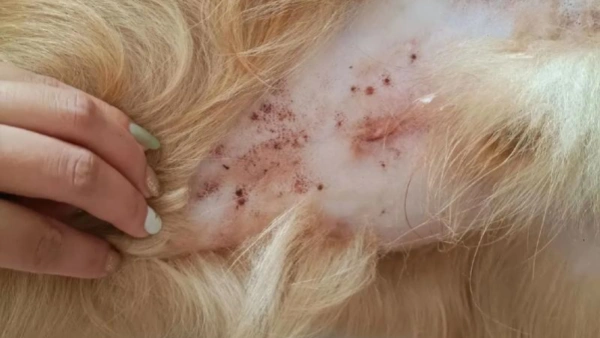
What is Flea Allergy Dermatitis (FAD)?
Definition and cause
Flea allergy dermatitis is an intense allergic reaction some dogs have to proteins in flea saliva. Even a single bite can trigger a strong immune response that causes severe itching, redness, and broken skin. Understanding how to treat flea dermatitis in dogs starts with recognizing that the allergy — not just the flea — drives symptoms.
Typical signs to watch for
Relentless scratching, biting or licking (tail base, hips, belly, groin are common).
Red bumps, scabs, or crusty skin; hair loss in focal areas.
Secondary bacterial or yeast infections in advanced cases.
Diagnosing fleas and FAD at home
Quick home checks
Use a fine-tooth flea comb over dark fur — look for tiny black specks (flea dirt).
Wipe suspected dirt on a damp white paper towel — red rings indicate digested blood.
If most itching is at the tail base and along the back, flea allergy is likely.
When to consult your vet
If the skin is raw, oozing, or foul-smelling (possible infection).
If your dog is lethargic, not eating, or has other worrying symptoms.
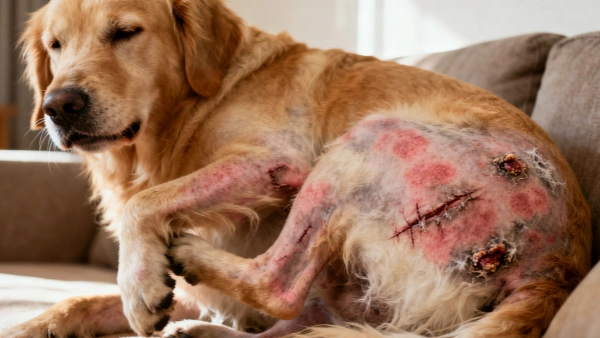
Step-by-step home treatment plan
Below is a clear, practical plan for how to treat flea dermatitis in dogs at home. Use each step as a building block — removing fleas alone is not enough if inflammation and infection remain untreated.
Step 1 — Remove fleas from the dog
Give a veterinarian-recommended flea bath or topical treatment appropriate for your dog’s age and health.
Use a flea comb daily for several days to remove live fleas and eggs.
Treat all pets in the household at the same time to prevent re-infestation.
Step 2 — Treat skin irritation and prevent infection
Rinse gently with cool water and a soothing oatmeal or aloe shampoo (follow product instructions).
Apply a pet-safe topical skin soother (e.g., colloidal oatmeal spray or prescribed ointment) to calm itching.
If there are open sores, consult your vet promptly — antibiotics or medicated shampoos may be required.
Step 3 — Reduce allergic inflammation
Discuss short-term anti-inflammatory options with your vet (antihistamines or corticosteroids when appropriate).
Supplement with omega-3 fish oil under veterinary guidance to support skin barrier repair.
Step 4 — Eliminate fleas from the home
Launder bedding, blankets, and removable covers in hot water every 1–2 weeks.
Vacuum carpets and upholstery thoroughly and often; dispose of vacuum bag contents or clean vacuum canister outside.
Use a safe household tick & flea spray for the home (follow label directions and keep pets/people away until dry).
Natural and supportive home remedies
Safe home aids (for mild cases or as support)
Oatmeal baths — soothing and commonly recommended to calm itching.
Diluted apple cider vinegar spray (1:1 with water) can deter fleas on the coat, but avoid open wounds.
Coconut oil — applied topically in small amounts to dry areas may help skin hydration.
Cautions with natural remedies
Always avoid essential oils that are toxic to dogs (tea tree, eucalyptus, etc.).
Natural remedies help symptoms but do not replace veterinary treatment for severe or infected skin disease.
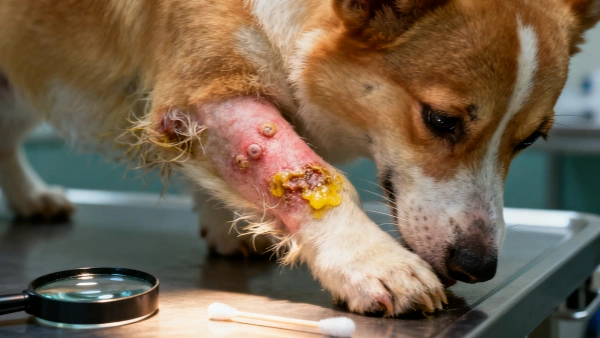
Diet, supplements, and long-term support
Nutrition to support skin health
High-quality diet rich in omega-3 fatty acids (salmon, fish oil supplements) helps reduce inflammation.
Consider limited-ingredient or novel-protein foods if food allergy is suspected.
Supplements commonly used
Fish oil (EPA/DHA) for anti-inflammatory benefits.
Probiotics to support skin via gut health.
Zinc or vitamin E if your vet recommends them based on testing.
Everything Our Vets Recommend
How long until a dog recovers?
Minor reactions may improve within 1–2 weeks with prompt flea removal and soothing care.
Moderate cases often take 3–4 weeks to show marked improvement.
Severe or secondarily infected cases can take months and need veterinary medication.
Preventing future outbreaks
Use year-round flea prevention as advised by your vet (topicals, oral medications, collars).
Keep the environment clean, wash bedding weekly during flea season, and maintain yard control.
Check your dog regularly for fleas after outdoor activities.
how to treat flea allergy dermatitis in dogs at home FAQs
Will flea allergy dermatitis spread to humans?
No — the allergic reaction is specific to dogs. Fleas can bite humans, but humans do not develop the same immune-driven skin disease as dogs. Treating the home for fleas is still important to avoid bites.
Are antihistamines helpful for dogs?
Some dogs benefit from antihistamines; however, effectiveness varies. Always check dosage and suitability with your veterinarian before giving any human or animal medication.
Can I use human topical creams on my dog?
Do not use human topical steroids or creams unless explicitly instructed by your vet. Dogs can absorb medications differently, and improper products can harm skin or overall health.
How soon should I see a vet?
Seek veterinary care if there are open sores, bad odor, pus, worsening redness, or if your dog is unwell. Also see a vet if home care does not improve symptoms within 2 weeks.
Summary — fast, practical steps
For owners asking how to treat dog flea allergy dermatitis, the core plan is:
Remove fleas from the dog and all household pets.
Sooth skin with vet-approved shampoos and topical products.
Control the home environment to eliminate eggs and larvae.
Use dietary support and vet-guided medications for inflammation and infection.
Early action, consistent flea prevention, and a partnership with your veterinarian are the best ways to keep your dog itch-free and healthy.
You May Like:
- Allergic Reaction to Fleas on Dogs: What Vets Wish You Knew
- Best Dog Food for Allergic Dogs: Vet Picks You Can Trust
- 3 Month Allergy Shot for Dogs: Vet-Approved Relief
- Best Allergy Supplements for Dogs: What Vets Recommend
User Comments
Does flea treatment kill ear mites too?
Can dogs take human probiotics?
Can dogs have people probiotics safely?
Related Articles
View all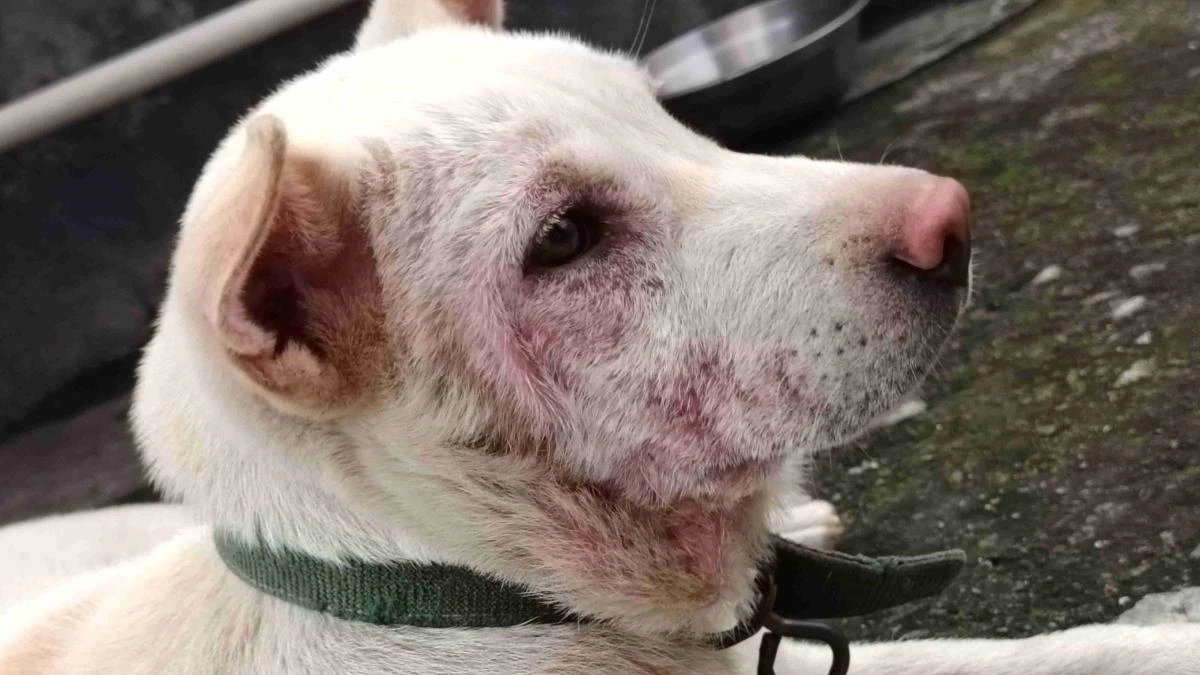
How to Get Rid of Dog Allergies Naturally: Common Mistakes

Dog Allergic Reaction Eye Swelling: Hidden Mistakes to Avoid

Why Do Bulldogs Scratch? Bulldog Skin Allergies Guide
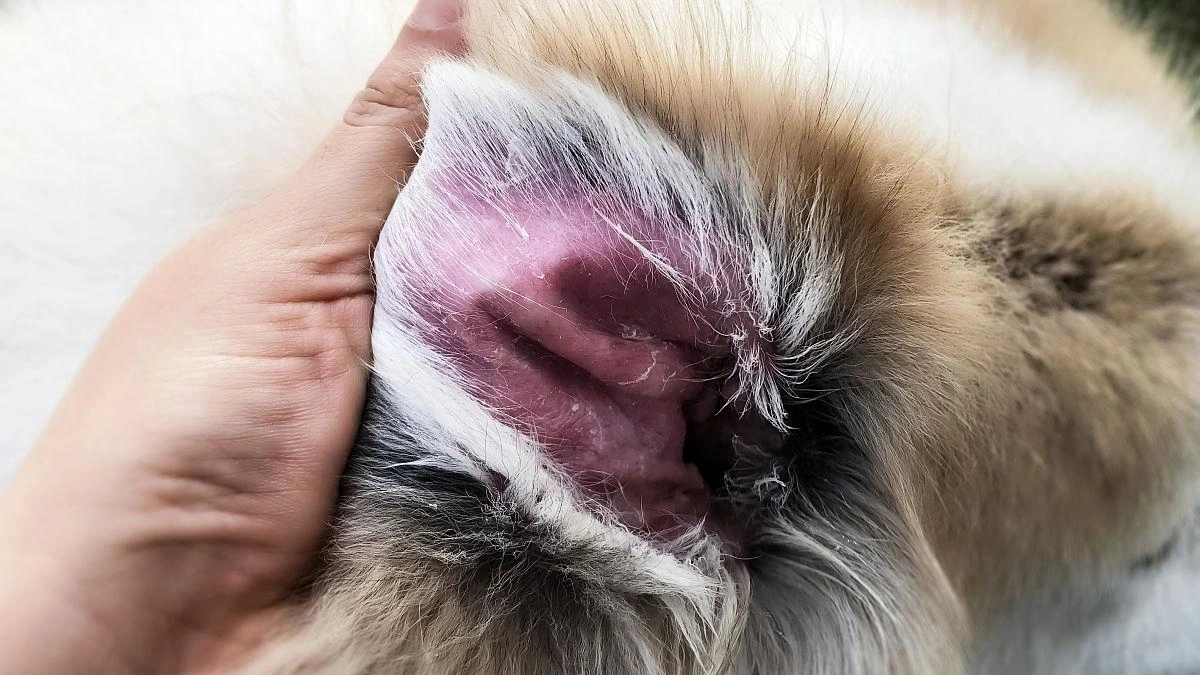
Cure for Dog Skin Allergies Owners Often Miss

How to Get Rid of Dog Allergies Naturally: Common Mistakes

Dog Allergic Reaction Eye Swelling: Hidden Mistakes to Avoid

Why Do Bulldogs Scratch? Bulldog Skin Allergies Guide

Cure for Dog Skin Allergies Owners Often Miss
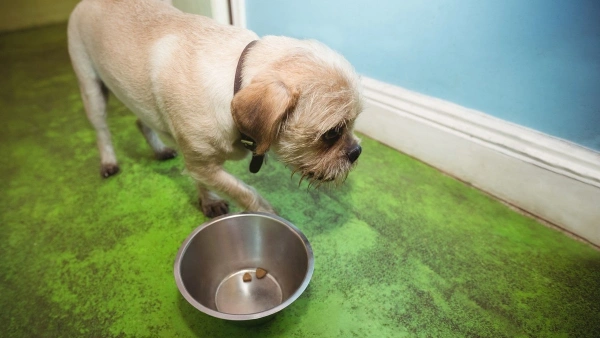
Vet-Recommended Wet Dog Food for Sensitive Stomachs — 2025 Guide
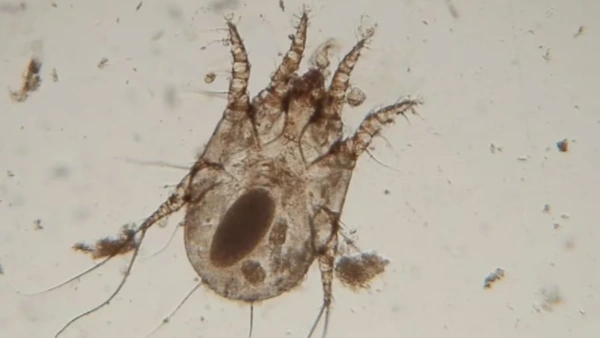
Dog Dust Mite Allergy: Symptoms, Treatment, Prevention

Can Allergies in Dogs Cause Diarrhea and Vomiting? Explained

10 Pitbull Health Problems You Should Know in 2025 — Tips


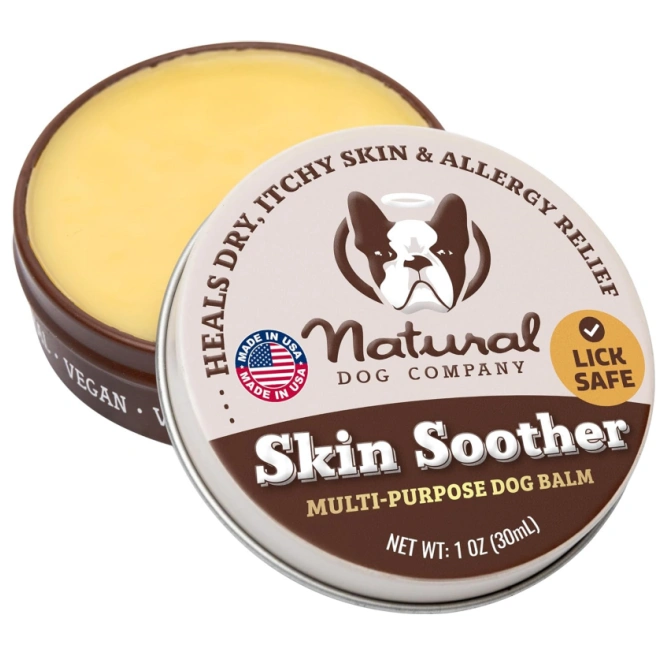
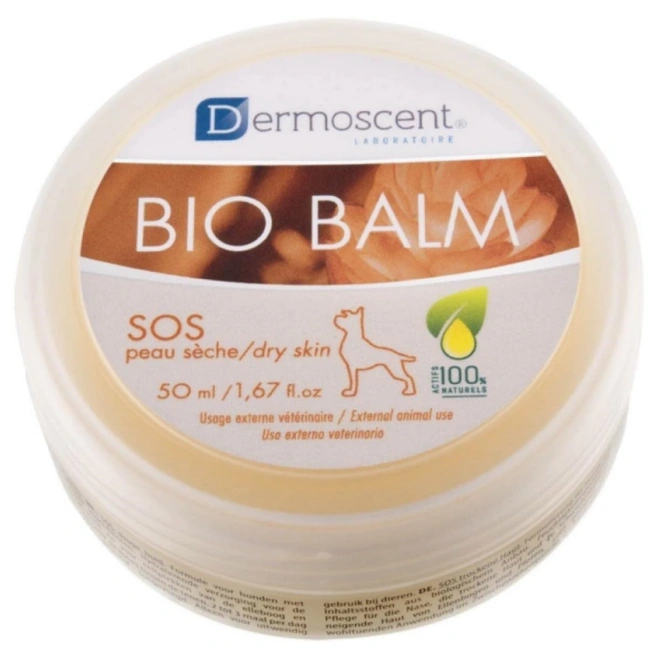
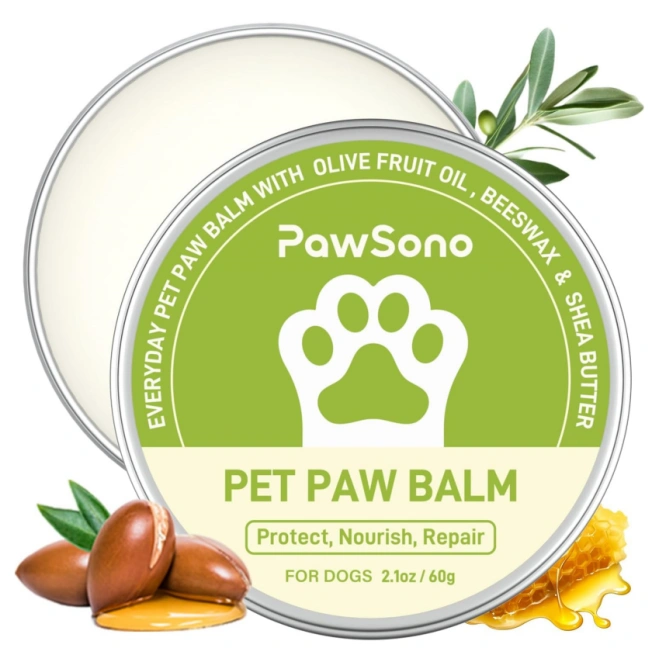
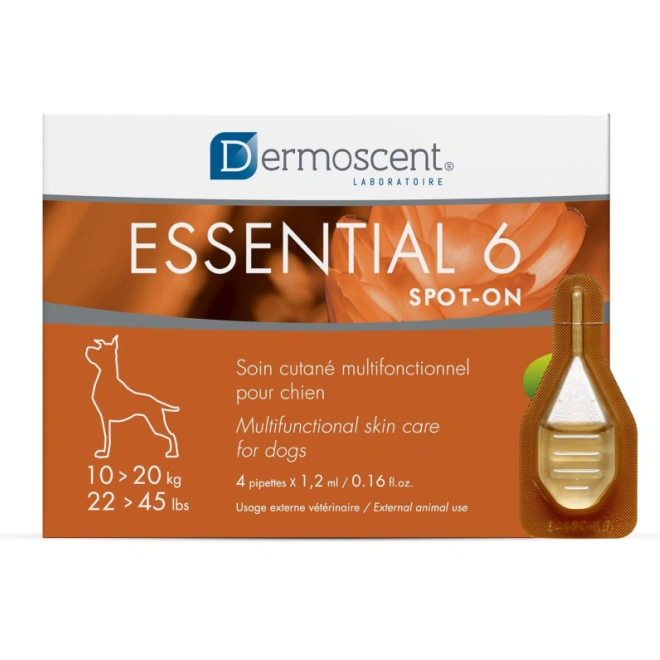








Leave a Reply